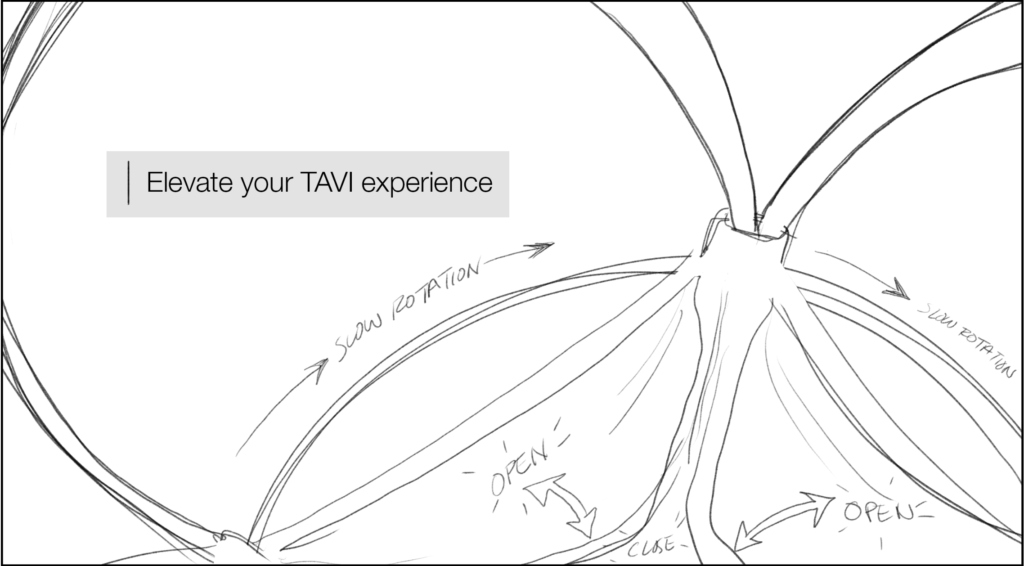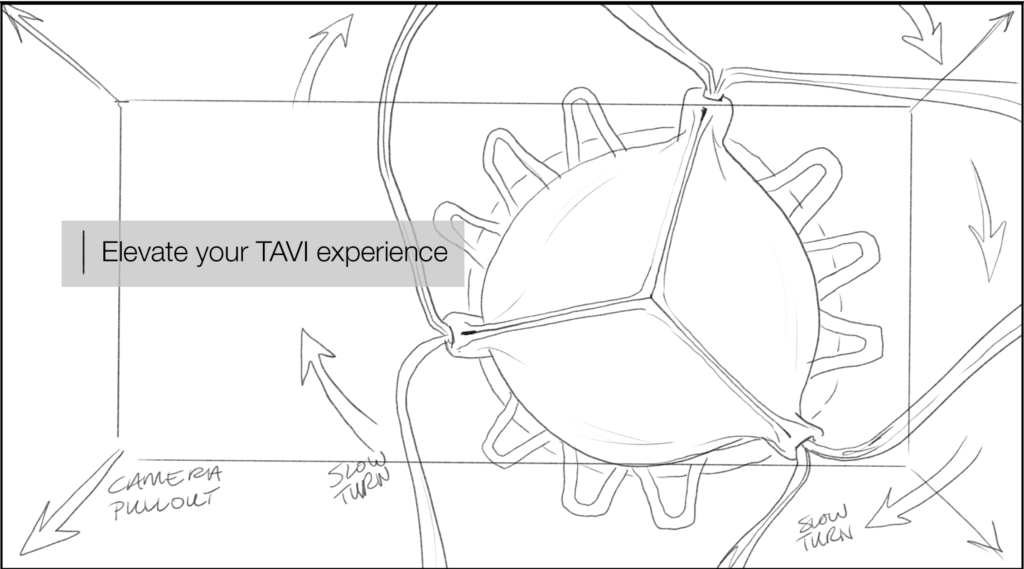A Visual Blueprint
Before any animation comes to life, there’s an often misunderstood but essential step that sets the entire production in motion: storyboarding. When creating complex animated content, storyboards serve as the blueprint that guides and aligns individuals and teams around a central vision for the final product. In this blog, we’ll explore what storyboarding is, where it fits into the animation process, and how it helps clients and creatives stay on the same page…literally.

What is a Storyboard?
In essence, a storyboard is a visual outline of your animation or video project—a frame-by-frame sketch of what the final piece will look like. It’s not meant to be an exact rendering of the animation, but a tool that is used to map out each scene, showing how different story elements like visuals, graphics and narration, are represented and changed over time.


For many of our projects, where complex technology and anatomy need to be visualized precisely, a storyboard becomes an indispensable tool for collaboration and communication. It gives creative teams, subject matter experts, marketers, and stakeholders a chance to align around production and communicate necessary revisions before more resources are spent on the next steps of production.
How Storyboarding Fits into the Production Process
Storyboarding is one of the earliest and most pivotal steps in the animation production process. After discovery and scripting, the storyboard is the first time clients and internal teams get to see how the narrative will unfold in the final product. It establishes the visual flow, shot composition, timing, and on-screen messaging.
By locking in a storyboard early, we avoid costly revisions later in the animation phase. It’s far easier and faster to adjust a frame or scene at the storyboard stage than after 3D modelling begins. In this way, storyboarding is an incredibly efficient tool for streamlining the entire production timeline.
Storyboards as a Communication Tool
At their core, storyboards are tools for communication. In any animation project, multiple stakeholders are involved: marketing teams, subject matter experts, clinical advisors, regulatory reviewers, and creative professionals. A storyboard gives everyone a shared visual reference to align around before production begins.
Instead of trying to interpret a written script or visualize timing from a concept brief, teams can see how the story will be told, frame-by-frame. This gives individuals a more tangible basis to discuss ideas, provide feedback, and make adjustments early in the production process.
During the storyboarding process, our clients are given the opportunity to assess whether key messages are landing correctly, whether technical elements are represented accurately, and whether the overall representation supports marketing or campaign goals. For our creative and animation teams, they serve as a roadmap to guide design, messaging, and animation, in a style that fits our client’s brand and project goals.
How We Build Storyboards at Meditech
At Meditech, building a storyboard starts with a thoughtful review of the creative brief, keeping the intended use case and target audience front and center. With an approved script in hand, we begin drafting out our storyboard visuals by hand. These are typically done digitally in a program like Adobe Illustrator but are sometimes done physically and digitally converted for distribution. It is in this process that we will start to lay out the building blocks for the project–taking into account visual presentation, timing, scripting, branding, and targeted messaging.

We will tailor the level of detail based on the target audience and client needs. Animations created to demonstrate the complex functionality of a medical device are best represented in the highest detail possible while 2D patient education pieces are typically more straightforward and accessible representations. Every decision during storyboarding helps to guide our team and our clients through the rest of the production process.
Tips for Clients: How to Collaborate Effectively
Reviewing a storyboard might feel unfamiliar at first, but this stage is one of the most important opportunities you’ll have to shape the outcome of your project.
Here are a few tips to help you collaborate and communicate effectively around storyboards:
1. Focus on clarity, not polish.
Storyboards are simple by design. They’re meant to represent concepts, timing, and visual layout, not final design. Focus your feedback on whether the visuals support the message, whether each step is clear and represented accurately, and whether the sequence makes sense for your audience.
2. Ask the right questions.
-Does this accurately reflect the procedure or product use?
-Is the message coming across clearly for the intended audience?
-Are any steps missing, unnecessary, or out of order?
-Do the visuals support the tone and goals of the piece?
-Are the general relationships of position, scale and proportion represented?

3. Consider the context.
Think about how the storyboard ties back to your goals. Whether the piece is meant to educate, promote, or simplify a technical process, try to view the visuals through that lens.
4. Don’t be afraid to speak up.
This is the ideal time to suggest edits, voice concerns, or ask questions. Revisions are quick and easy at this stage and much easier than after animation has begun.
5. Gather stakeholders.
Make sure the right people are involved in reviewing the storyboard such as marketing, regulatory (and legal “pre-review”), clinical, or product development representatives. Getting aligned now means fewer delays and smoother feedback later on.
At Meditech, we guide our clients through every step of this process, ensuring storyboards are easy to review, clearly annotated, and presented in context so you’re never left guessing.
Conclusion: Storyboarding Matters
Storyboards are one of the most important building blocks in the foundation of a successful production. It’s where strategy, storytelling, and visual planning intersect to create a clear path forward for everyone involved. When done thoughtfully, a storyboard aligns teams, avoids costly revisions, and sets the stage for a polished final product that meets our clients goals.
If your team is preparing to create visual content and wants a process that’s structured, collaborative, and built for success—let’s talk. We’re here to help you bring your story to life, one frame at a time.




